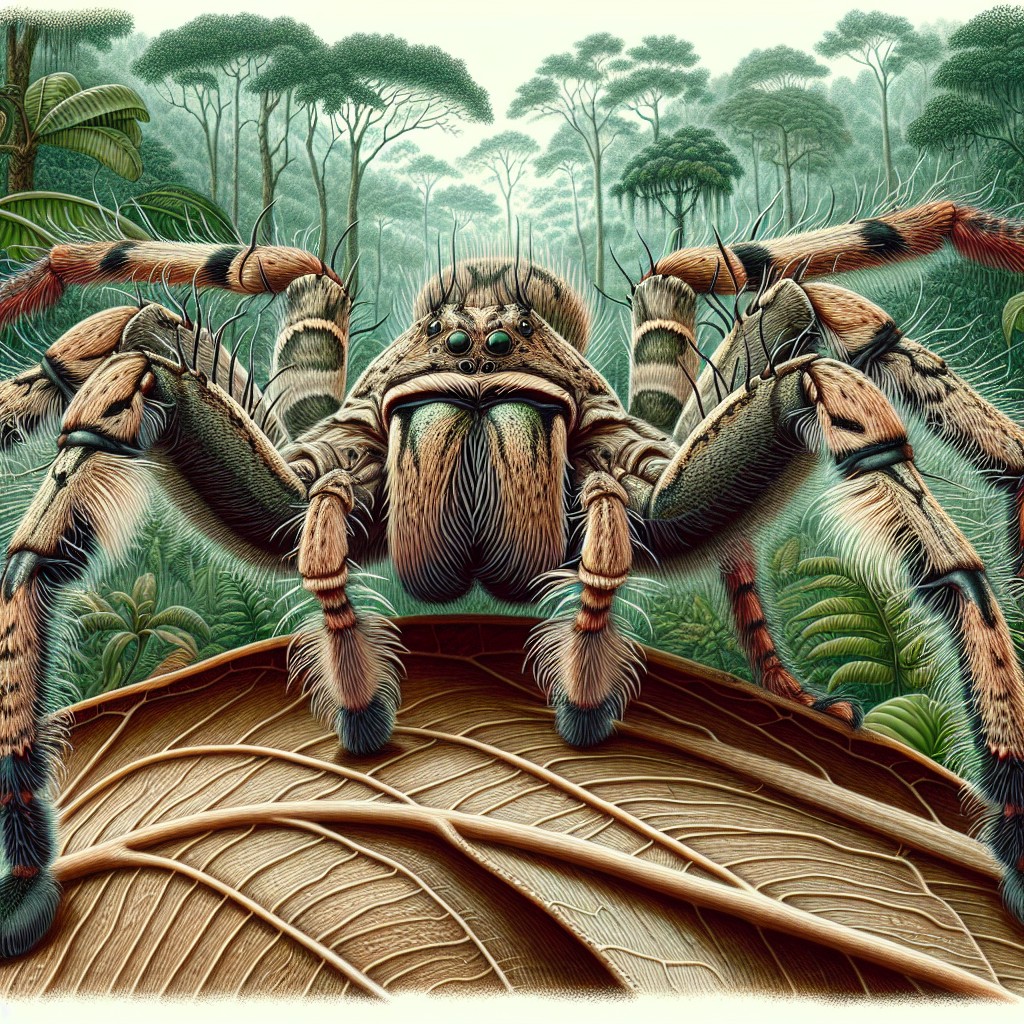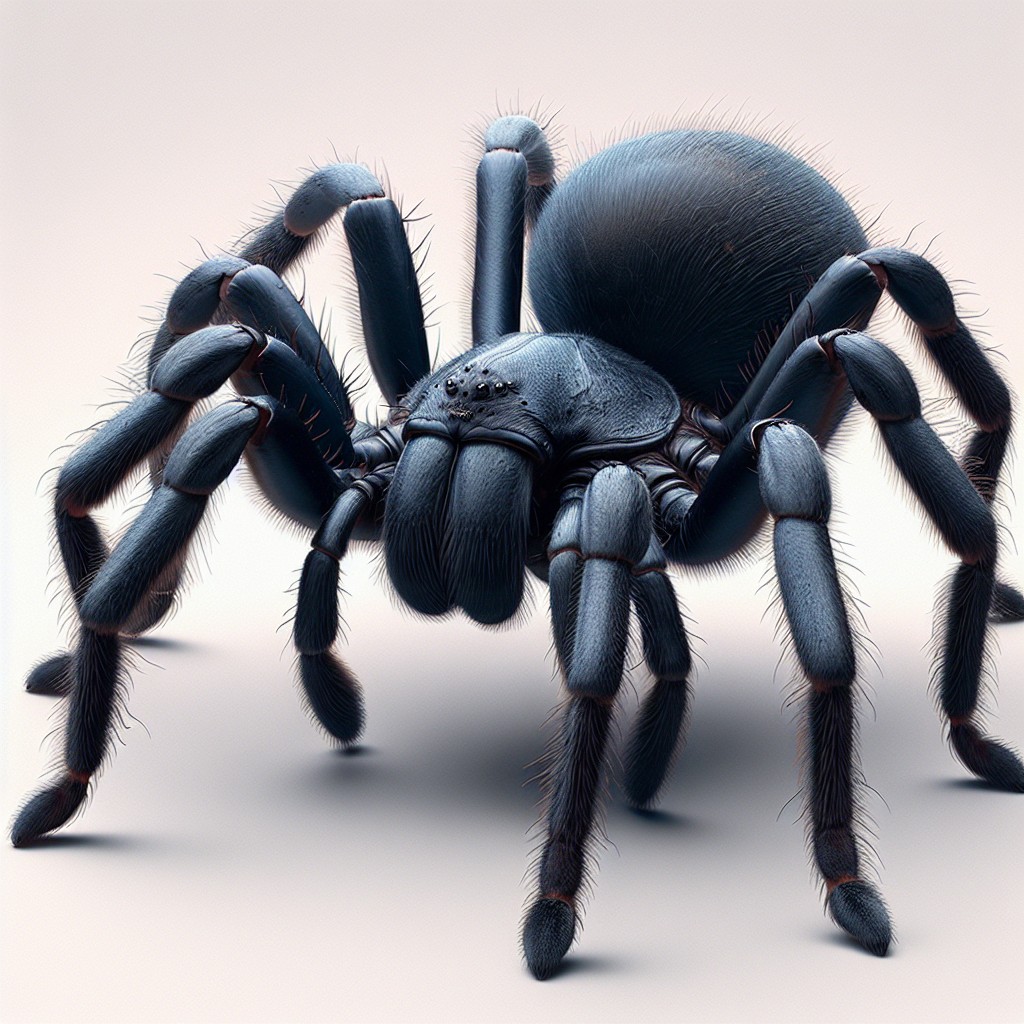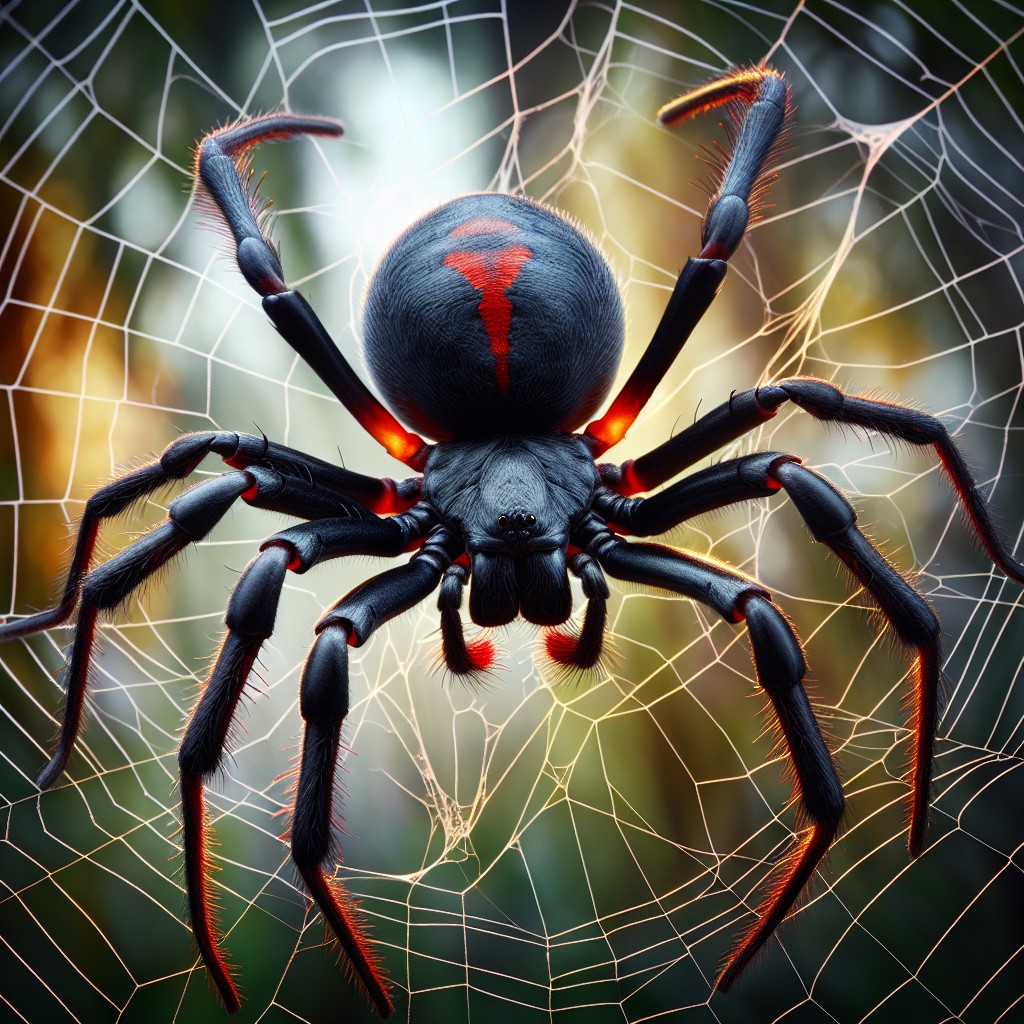The mouse spider (Missulena spp.) is a fascinating and enigmatic species of spider that is native to Australia. It belongs to the family Actinopodidae, which also includes the trapdoor spiders. The mouse spider is known for its unique physical characteristics, venomous bite, and elusive nature. Despite its name, the mouse spider does not prey on mice but instead feeds on insects and other small invertebrates.
The mouse spider is considered enigmatic due to its elusive behavior and limited research conducted on the species. It is often mistaken for other spider species, such as the funnel-web spider, due to its similar appearance and venomous bite. The lack of comprehensive studies on the mouse spider has led to a limited understanding of its biology, behavior, and ecological role. However, recent research efforts have shed some light on this mysterious arachnid.
Key Takeaways
- The Mouse Spider is a mysterious and enigmatic species that is native to Australia.
- Missulena spp. have distinct physical characteristics, including a stocky body, short legs, and a glossy black or dark brown color.
- Mouse Spiders can be found in various habitats across Australia, including forests, grasslands, and deserts.
- The venom of the Mouse Spider can be dangerous to humans and has potential medical importance.
- Missulena spp. are carnivorous and feed on a variety of prey, including insects, spiders, and small vertebrates.
The Physical Characteristics of Missulena spp.: A Closer Look
The mouse spider is a medium-sized spider with a body length ranging from 1 to 3 centimeters. It has a robust and compact body shape, with a glossy black or dark brown exoskeleton. The abdomen is spherical in shape and often has a reddish or purplish hue. The legs are thick and muscular, allowing the spider to move quickly and efficiently.
One of the distinguishing features of the mouse spider is its fangs, which are large and powerful. These fangs are used to inject venom into their prey or as a defense mechanism when threatened. The venom of the mouse spider is potent and can cause severe pain and discomfort in humans.
In terms of physical appearance, the mouse spider is often compared to other spider species such as the funnel-web spider. However, there are subtle differences that can help differentiate between the two. For example, the mouse spider has a more rounded abdomen compared to the funnel-web spider, which has a more elongated and cylindrical shape. Additionally, the mouse spider lacks the distinctive finger-like spinnerets found in the funnel-web spider.
Distribution and Habitat of the Mouse Spider: Where to Find Them
The mouse spider is endemic to Australia and can be found in various parts of the country. It has a wide geographic range, with different species of mouse spiders found in different regions. Some species are found in coastal areas, while others are found in inland regions.
In terms of habitat preference, the mouse spider is typically found in sandy or loamy soils, often near water sources such as rivers or lakes. They are known to burrow into the ground and create silk-lined burrows where they reside. These burrows can be up to 30 centimeters deep and serve as a safe haven for the spider.
The mouse spider is also known to inhabit grasslands, heathlands, and woodland areas. They are most active during the warmer months and tend to be more active at night. Due to their elusive nature and preference for underground habitats, spotting a mouse spider in the wild can be quite challenging.
The Venom of the Mouse Spider: Potential Danger and Medical Importance
| Topic | Data/Metrics |
|---|---|
| Mouse Spider | A venomous spider found in Australia |
| Size | 10-35 mm in length |
| Color | Dark brown to black |
| Venom | Contains neurotoxins and can cause severe symptoms such as muscle pain, sweating, nausea, and vomiting |
| Medical Importance | Can cause serious health problems and even death in some cases |
| Treatment | Antivenom is available and should be administered as soon as possible |
The venom of the mouse spider is highly potent and can cause severe symptoms in humans if bitten. The venom contains a mixture of neurotoxins and enzymes that can affect the nervous system and other bodily functions. The severity of the symptoms depends on various factors, including the species of mouse spider, the amount of venom injected, and the individual’s sensitivity to the venom.
When bitten by a mouse spider, individuals may experience intense pain at the site of the bite, as well as swelling and redness. Other symptoms may include nausea, vomiting, headache, sweating, and muscle spasms. In severe cases, the venom can cause respiratory distress and even death if left untreated.
Despite its potential danger, the venom of the mouse spider also has medical importance. Researchers have been studying the venom for its potential therapeutic uses, particularly in the field of pain management. Some components of the venom have been found to have analgesic properties and may be used to develop new pain medications.
Feeding Habits and Prey of Missulena spp.: What Do They Eat?
The mouse spider is a carnivorous predator that feeds on a variety of small invertebrates. Its diet primarily consists of insects, such as beetles, ants, and grasshoppers. It also preys on other spiders, including smaller species of spiders that inhabit the same habitat.
The hunting behavior of the mouse spider is quite fascinating. It typically waits inside its burrow for prey to come within striking distance. When an unsuspecting insect or spider ventures too close, the mouse spider quickly emerges from its burrow and immobilizes its prey with a venomous bite. It then drags the paralyzed prey back into its burrow to consume at its leisure.
The mouse spider is an opportunistic feeder and will consume any suitable prey that comes its way. Its diet may vary depending on the availability of prey in its habitat. This adaptability allows the mouse spider to survive in different environments and ensures a steady supply of food.
Reproduction and Life Cycle of the Mouse Spider: A Fascinating Journey

The mating behavior and reproduction process of the mouse spider are quite intriguing. Male mouse spiders are often smaller than females and have distinctive mating behaviors to attract a mate. They create a drumming sound by tapping their pedipalps against the ground or other surfaces to communicate with females.
Once a female has been successfully courted, mating occurs, and the female stores the sperm for later use. The female then constructs an egg sac, which she guards and protects until the spiderlings hatch. The number of eggs in an egg sac can vary depending on the species, with some species producing as few as 20 eggs and others producing up to 100.
The spiderlings undergo several molts as they grow and develop. They remain in the egg sac for a period of time before emerging and dispersing into the surrounding environment. The exact duration of this process can vary depending on environmental conditions and other factors.
Adaptations and Survival Strategies of Missulena spp.: How They Thrive in Their Environment
The mouse spider has several unique adaptations and survival strategies that help it thrive in its environment. One of these adaptations is its ability to burrow into the ground and create silk-lined burrows. These burrows provide protection from predators, as well as a safe place to rest and hide.
The mouse spider also has excellent camouflage, which allows it to blend in with its surroundings. Its dark coloration helps it remain hidden in the shadows, while its compact body shape allows it to squeeze into tight spaces. This camouflage helps the spider avoid detection by predators and increases its chances of successfully ambushing prey.
In terms of behavior, the mouse spider is known for its aggressive nature when threatened. It will rear up on its hind legs and display its fangs as a warning to potential predators. If provoked further, it may deliver a venomous bite as a defense mechanism. This aggressive behavior serves as a deterrent to predators and helps the mouse spider protect itself.
Conservation Status of the Mouse Spider: Threats and Conservation Efforts
The conservation status of the mouse spider is currently not well-documented, as limited research has been conducted on the species. However, like many other spider species, the mouse spider faces threats to its population due to habitat loss and degradation.
Human activities such as urbanization, agriculture, and land clearing can destroy the natural habitats of the mouse spider, making it difficult for them to survive. Additionally, climate change and the introduction of invasive species can also have negative impacts on the mouse spider population.
Conservation efforts for the mouse spider are currently limited, but there is growing awareness of the need to protect and preserve Australia’s unique biodiversity. Efforts are being made to conserve and restore natural habitats, as well as raise awareness about the importance of spiders and their role in ecosystems.
The Mouse Spider in Popular Culture: Myths, Legends, and Folklore
The mouse spider has a prominent place in Australian folklore and popular culture. It is often associated with myths and legends, with stories passed down through generations. One common myth is that the bite of a mouse spider can cause a person to turn into a mouse. This myth likely stems from the spider’s name and its venomous bite.
In popular culture, the mouse spider has been featured in various forms of media, including books, movies, and artwork. It is often depicted as a mysterious and dangerous creature, adding to its enigmatic nature. However, it is important to note that these portrayals may not always be accurate and should be taken with a grain of salt.
Studying the Mouse Spider: Current Research and Future Directions
Despite its enigmatic nature, there has been an increase in research efforts focused on understanding the biology, behavior, and ecological role of the mouse spider. Scientists are studying various aspects of the species, including its venom composition, mating behaviors, and habitat preferences.
Current research on the mouse spider aims to fill the gaps in our knowledge and provide a better understanding of this fascinating species. By studying its venom, researchers hope to uncover potential medical applications and develop new treatments for pain management. Additionally, further research on its ecology and behavior can help inform conservation efforts and ensure the long-term survival of this unique spider.
In terms of future directions, it is important to continue studying the mouse spider and other lesser-known species to gain a comprehensive understanding of Australia’s biodiversity. This knowledge can help inform conservation strategies and ensure the preservation of these species for future generations. Additionally, further research can shed light on the ecological role of the mouse spider and its interactions with other organisms in its habitat.
FAQs
What is a Mouse Spider?
A Mouse Spider is a venomous spider that belongs to the Missulena genus. They are found in Australia and are named after their burrowing behavior, which is similar to that of a mouse.
What do Mouse Spiders look like?
Mouse Spiders are typically dark-colored, ranging from black to brown. They have a shiny, hairless body and can grow up to 3 cm in length. The males have large, bulbous pedipalps (the two appendages near the mouth) that are used for mating.
Are Mouse Spiders dangerous?
Yes, Mouse Spiders are venomous and can be dangerous to humans. However, they are not aggressive and will only bite if provoked or threatened. Their venom can cause symptoms such as pain, swelling, and nausea, but fatalities are rare.
Where are Mouse Spiders found?
Mouse Spiders are found throughout Australia, but are most commonly found in the southern and eastern regions. They prefer dry habitats such as forests, grasslands, and deserts, and are often found in burrows or under rocks and logs.
What do Mouse Spiders eat?
Mouse Spiders primarily feed on insects, but will also eat other spiders and small animals such as lizards and mice. They are ambush predators and will wait for their prey to come within striking distance before attacking.
How can I avoid being bitten by a Mouse Spider?
The best way to avoid being bitten by a Mouse Spider is to avoid handling them or disturbing their burrows. If you live in an area where Mouse Spiders are common, it is important to wear protective clothing and shoes when working outside. If you do get bitten, seek medical attention immediately.


